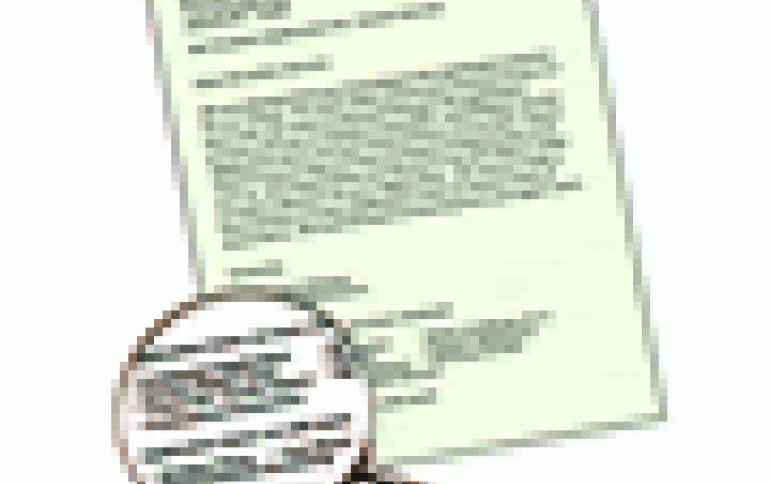
Secret Code 'Traces Copies'
A secret code embedded in some colour laser jet printers allows the US government and any other organisation capable of reading the cipher to identify when the copies were made and on which particular machine, according to research conducted by the Electronic Frontier Foundation (EFF).
The San Francisco-based privacy organisation said it had detected almost invisible patterns of yellow dots on every document printed on the affected machines that could indicate when and where the print was made.
Among the copiers found to include the secret yellow dots are ones made by Brother, Canon, Dell, Epson, HP, Konica/Minolta, Kyocera, Lexmark, Ricoh, Tektronix/Toshiba and Xerox, according to the EFF.
The foundation cautioned that though it had deciphered the code on Xerox machines, it had not done the same for the yellow dots found on other copiers, but that it was likely that they too represented a sophisticated document tracking system.
"So far, we've only broken the code for Xerox DocuColour printers, but we believe that other models from other manufacturers include the same personally identifiable information in their tracking dots," said EFF Staff Technologist Seth David Schoen.
The dots are yellow, less than one millimetre in diameter, and are typically repeated over each page of a document. The pattern can be seen using a blue light, a magnifying glass, or a microscope.
The group said that currently only the US Secret Service and now itself had the ability to decrypt the imprint. It said that although the Secret Service claims to use this information only for cornering counterfeit crimes, there is no legal framework to prevent the information being put to other uses.
EFF expressed concern that no laws were in place to prevent the government from abusing information obtained through this new tracking technique.
"Underground democracy movements that produce political or religious pamphlets and flyers, like the Russian samizdat of the 1980s, will always need the anonymity of simple paper documents, but this technology makes it easier for governments to find dissenters," said EFF Senior Staff Attorney Lee Tien.
"Even worse, it shows how the government and private industry make backroom deals to weaken our privacy by compromising everyday equipment like printers.
"The logical next question is: what other deals have been or are being made to ensure that our technology rats on us?"
Among the copiers found to include the secret yellow dots are ones made by Brother, Canon, Dell, Epson, HP, Konica/Minolta, Kyocera, Lexmark, Ricoh, Tektronix/Toshiba and Xerox, according to the EFF.
The foundation cautioned that though it had deciphered the code on Xerox machines, it had not done the same for the yellow dots found on other copiers, but that it was likely that they too represented a sophisticated document tracking system.
"So far, we've only broken the code for Xerox DocuColour printers, but we believe that other models from other manufacturers include the same personally identifiable information in their tracking dots," said EFF Staff Technologist Seth David Schoen.
The dots are yellow, less than one millimetre in diameter, and are typically repeated over each page of a document. The pattern can be seen using a blue light, a magnifying glass, or a microscope.
The group said that currently only the US Secret Service and now itself had the ability to decrypt the imprint. It said that although the Secret Service claims to use this information only for cornering counterfeit crimes, there is no legal framework to prevent the information being put to other uses.
EFF expressed concern that no laws were in place to prevent the government from abusing information obtained through this new tracking technique.
"Underground democracy movements that produce political or religious pamphlets and flyers, like the Russian samizdat of the 1980s, will always need the anonymity of simple paper documents, but this technology makes it easier for governments to find dissenters," said EFF Senior Staff Attorney Lee Tien.
"Even worse, it shows how the government and private industry make backroom deals to weaken our privacy by compromising everyday equipment like printers.
"The logical next question is: what other deals have been or are being made to ensure that our technology rats on us?"

















